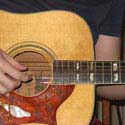|
Another one for the "3.5 is wack yo" department: The BoVD has a class called Cancer Mage whose main schtick is diseases and spreading them, and at first level they get to ignore any negative mechanical effects from any diseases they have. Normal enough, all the better to play Typhoid Mary, but there're diseases called Festering Anger and Vile Rigidity that increase strength and natural AC, at the cost of reducing I forget which stat, Int or something. This part is subject to interpretation, but: If the Mage can ignore all negative effects, does he also get the positive effects? If so, Cancer Mage + Festering Anger + Vile Rigidity + time => Nigh Infinite Strength and Natural AC.
|
|
|
|

|
| # ? Apr 26, 2024 02:10 |
|
Oh man, this got posted when I wasn't looking? I have something to share! So. In D&D 3.5, there's various things which allow you to survive large amounts of negative HP, for a very short time. The Frenzied Berserker in particular allows you to survive literally infinite amounts as long as your rage holds out, I believe. There are assorted charop tricks which use this sort of thing, some sort of damage copying/transference or something to exploit it, and then fix the fact that you're in the millions or possibly literally infinite amounts of negative HP depending on what damage trick you used, by sticking the character's head in a bucket of water. See, when you start drowning, the first step is that you fall unconscious and your HP is set to zero. Easy way to stabilize somebody: drown them! Then just pull them out once that happens and heal them up from zero! There's just one small problem most of these people have overlooked: there are no rules for stopping drowning. d20srd.org posted:When the character finally fails her Constitution check, she begins to drown. In the first round, she falls unconscious (0 hp). In the following round, she drops to -1 hit points and is dying. In the third round, she drowns. There you are. The mechanical effects of drowning. Once you begin drowning, you go to 0 HP and unconcious: Then you go to -1 HP the next round, then on the third round you drown. Absolutely nothing about any method of stopping this process, and if you're rolling with RAW poo poo like assuming that means yoru HP go UP to zero if they were lower, well. In fact, since it doesn't say you die, we should go look up the rules for drowning to see what happens when you get to the third round! Let's see... d20srd.org posted:When the character finally fails her Constitution check, she begins to drown. In the first round, she falls unconscious (0 hp). In the following round, she drops to -1 hit points and is dying. In the third round, she drowns. And the Dead condition doesn't actually indicate it stops other ongoing conditions like this, so even if somebody kills you, you'll only know the peace of the grave until the next round at which point you either get stuck back in the "unconscious at 0 HP" or "dying" state. Rocket Ace posted:Isn't there a way to make a rail gun using a line up of peasants a mile long using a free action to pass a canon ball to each other? As it travels so far in such a short amount of time it gathers momentum and can destroy castles?
|
|
|
|
|
This is an exploit for D&D 3.5 that pretty much everybody who plays already knows about, but you might not play it, so, in that case. There's a category of feats in D&D called Metamagic feats. Metamagic feats add bonuses to spells, in exchange for making the spell higher level to cast. There's a feat called "Persistent Spell", which increases a spell's duration to 24 hours. So you cast it in the morning and you're good for the day. For spells that give a bonus to stats, it's really useful. To compensate for this, though, persistent spell increases the underlying spell by 6 levels, which means you have to be a really high level to be able to do it. So far, so good. The thing is, Clerics can get a feat called Divine Metamagic. Divine Metamagic lets clerics (who have as a power the ability to turn undead so many times per day), the ability to, when they cast a metamagic spell, negate the increased spell level by spending turn attempts. So, to use Persistent Spell, for instance, you'd cast it at level and burn 6 of your daily turn attempts. What makes this really overpowered is that it's really easy for a cleric, by taking feats and items to get extra turn attempts. The most obvious example is the "nightstick", a magic item that isn't too expensive, and gives you 4 extra turn attempts a day. So, if you have two nightsticks, that's a Persistent spell and a half.
|
|
|
|
Let's try and oldie but a goodie with 4e. Let's say you have a level four hybrid Ranger|Monk named Billy. His feats are Hybrid Talent (Unarmed Strike), Berserker's Fury, and Hurl Weapon. If you're not familiar with that one, it's a Barbarian feat (which is why Billy first multiclassed to Barbarian) that lets you treat any off-hand weapon as heavy thrown weapon. You know what's an off-hand weapon? Unarmed strikes. So Billy can not only throw his unarmed strikes, but do so twice per round via Twin Strike. How is he doing this? Mazinger-style rocket punches? Ki blasts? Dhalsim stretchy-limbs? Repeatedly tearing off clenched fists and throwing them at his adversaries?
|
|
|
50 Foot Ant posted:Prone Shooter. Paizo errata'd Prone Shooter so that, instead of being useless, it is now merely mediocre: Prone Shooter posted:If you have been prone since the end of your last turn, the penalty to your Armor Class against melee attacks made against you is reduced to -2. In addition, the bonus to your Armor Class against ranged attacks made against you is increased to +6.
|
|
|
|
|
A fun one for Dungeon World I just thought up. I call it: Don Quixote the Paladin. Now, Dungeon World is nice in that it gives you 1 XP for every miss (six or less) you roll. It is a kindness given to ameliorate the dice god's spite/your own personal failures. But what happens if you abuse that kindness? Take a Paladin at level 3. You need the advanced moves Staunch Defender (When you Defend, you get +1 hold, even on a six or less) and Bloody Aegis (when you take damage, you may suffer a debility of your choice instead). You will be very good at tanking with your 8 in Constitution. Yes, 8 in Constitution. Suck it up, you have 18 HP and 2 Armor. When the combat music plays, you jump in front of whatever you feel like defending: party members, woodland creatures, a particularly nice rock, whatever. You roll the Defend move and hope you miss (which you'll do 58% of the time). You notch an XP and 1 hold. Spend the hold, direct an attack to yourself, Bloody Aegis it and take the Con debility. You now are rolling Defend at -2. This means 72% of the time you're going to miss and get another XP. Lather, rinse, repeat. Out of combat, you have two choices: start eating weird mushrooms and drinking pond water to force Defy Danger +Con moves or put your 9 in Int and ramble like a crazy person for Spout Lore. The latter gives you an extra non-essential debility to take with Bloody Aegis and another way to generate XP, but requires you to be actually funny or clever.
|
|
|
|
Many, possibly all, of the rules of 3.5 D&D are accessible and discoverable by the characters in the game. Okay. So there's some wizards of varying levels in a wizard's tower somewhere. They are indubitably intelligent - smarter than we are - so they start experimenting with the laws of the universe. (1) They know that their members can prepare X, Y, Z spells of I, II, III levels, and that these are always distinct quantities in a regular progression. They have at this point figured out the spell chart. (2) The ranges and areas of effect of their spells increase in distinct, quantized measurements - usually 5' or 10' each* - and that this increase corresponds with the number of spells prepared. (3) These gains only come in specific units. At this point, these Wizards have figured out Levels as a fundamental feature of the universe, and can even engineer out their specific levels through use of (for example) spell ranges. (4) By blasting damaging spells at uniform targets of specific kind - like walls and blocks of wood - they can determine the percent of the time the item is blown up. By letting Wizards of different levels do this, they can further chart the efficacy - the block of wood is destroyed X% of the time by a Fireball spell by a wizard of Y level. At this point, they can figure out Hit Points as a fundamental feature of objects. (4a) If they're particularly unethical, they can figure it out about goblins or kobolds, too. (5) By the same token, they can determine that the probability of destroying targets is shaped in a curve best represented by Xd6, where X is their Level. (6) With repeated uses of spells like Charm Person on each other, they can determine (a) saving throws, (b) Wizards' Will save progressions, (c) the caster's Intelligence bonuses, and (d) the targets' Wisdom bonuses. (7) By doing this against (for example) town guards, they can further work out non-Wizards' Will Save progressions and Wisdom scores. (8) The Wizards can get people to lift heavy things. They notice the maximum amounts their subjects can lift are, in turn, quantized into distinct units of measurement instead of smooth. By casting buffing spells, they can work out the progression and notice that it matches at every step. They have just worked out possibly as much as the entire 3-18 or 3-22 scale for Strength and can refer to it by a number. (9) Bonus spells for high intelligence, as soon as they figure out the progression system. They can now determine their own Intelligence scores based on how many spells they can prepare when they get their first spell of X level. They now know who's smarter. (10) Their actual numerical level - in case I wasn't clear before - because it's used in spell range and area formulae. So they could (and maybe should) refer to themselves as a Level 5 Wizard and have it mean the same thing as when a player says it. (11) Get their cleric buddies into the mix; priests of a magic or knowledge god should be amenable. Their levels and bonus spells from Wisdom should likewise be apparent. So now you can refer to "James, the Level 7 Cleric." They also know there's a Wisdom statistic, since the same thing that makes Clerics learn more spells also contributes to the % chance a Charm spell will affect them. (12) Can they at this point figure out ... characters' or monsters' hit points, the amount of damage done by daggers vs. swords, and how much a Cure X Wounds spell heals? This is less immediately obvious, but...
|
|
|
|
Facts about the Teenage Mutant Ninja Turtles, taken from Teenage Mutant Ninja Turtles and Other Strangeness...
|
|
|
|
A Pathfinder one regarding fireworks of doom. So in Pathfinder there's a spell called Snapdragon Fireworks. Now, on it's own, this spell is alright, it does piddly damage and applies the most useless condition. But it's level 1 on the wizard/sorcerer spell list. So let's take Bob, the level 11 Teleportation wizard with a base 20 Intelligence, bumped up at 4 and 8 to bring it to 22, then a +4 headband of vast intelligence to bring us to a 26 (+8) total and took the trait Magical Lineage choosing snapdragon fireworks, and the feats Spell Focus (Transmutation) and Greater Spell Focus (Transmutation) Enter Dazing Spell and Persistent Spell (and if your DM is nice/lenient/idiotic Heighten Spell.) So at level 10, you can make Snapdragon Fireworks into a persistent dazing spell, bringing you up to spell level 5 (and possibly heightening it to treat the DCs as such, depending on your DM). With Bob, that makes the DC be anywhere from 23-27 or more depending on your DM and a couple other factors, and the creature has to roll twice and make both or otherwise be dazed. That's not all however- there's a couple little thing that is in Snapdragon Fireworks that makes it so much worse than a lot of other spells. Namely, that it activates as a move action for a number of rounds equal to your caster level (10 for Bob). Meaning it allows for more fuckery with other spells for longer than most combats are. Two, it's range is 400 ft. +40 ft per caster level. So with Bob, he can completely shut down any creature from 800 feet away for 10 rounds, assuming he makes the spell resistance check (which can be made easier with spell penetration/greater spell penetration). Oh, and snapdragon fireworks never miss- it even says it in the spell. So if you need someone to lay down covering fire, don't call the archer, call the for the dude the makes fireworks. So, just for reference's sake- Bob can solo a CR 18 Frost Giant Jarl if he was going 1-on-1, though it might drain him of his resources just to whittle through her health. berenzen fucked around with this message at 07:54 on Feb 13, 2013 |
|
|
|
To be fair, the Other Strangeness book is based on the comic, in which Michelangelo and any other turtle is demonstrably better at fighting then Shredder. Dude is not a serious threat in the original comics.
|
|
|
|
Mr. Maltose posted:To be fair, the Other Strangeness book is based on the comic, in which Michelangelo and any other turtle is demonstrably better at fighting then Shredder. Dude is not a serious threat in the original comics. The point is that in that book Mike is both lower level and a better fighter than shredder. It is a REALLY weird book.
|
|
|
|
AD&D 1e Druids have two areas of sheer weirdness. One of them is more well known than the other. Levels 1-15 A lot of people know about how this goes. To level up past a certain point, you need to start challenging other druids to battle or else make sure they're dead so there's a vacancy. If you don't succeed, your experience total gets knocked down and you have to level up to try again. A pain to deal with, right? Well, once you reach level 16, you become a Hierophant, someone outside this level-restraining circlejerk. No more fights, but your weird and wonderful journey has just begun. Levels 16-23 quote:At 16th level: Now, yes, you'd expect a supernatural nature priest to be pretty cool, but why does he get the ability to impersonate anyone at all? Non-magically, at that? Note also how you can enter an Earth plane of existence but only conjure things from the Water one at level 17. This is because of a weird artifact of how the rule is staggered. The next few level continue like this, allowing you entry (non-magical entry at that) to planes of fire, air, water, para-elemental smoke... quote:At 23rd level: ...What? Okay, so the Inner Planes are... the elemental planes. You can already enter those. Good job, hero! But what the hell is "the Plane of Concordant Opposition" or the 7th dimension? I'unno. Those aren't detailed anywhere in the book. "concordant opposition" is apparently a place where everything in the universe goes to be really boring. But as far as anyone knows, when you roam the 7th dimension you just straight up are neighbors with Buckaroo Banzai.
|
|
|
|
In Legend of the Burning Sands, there is an Advantage, Blessing of the Elements. Nowhere in the book does it ever tell you what an Affinity for an element is, or how you might get one. Mors Rattus fucked around with this message at 13:21 on Feb 13, 2013 |
|
|
|
And now, AD&D 2e talks about courtly love. Step one: Only paladins may engage in courtship.quote:Courtly Love You have to get the DM's permission in order to be in love with your wife. quote:The object of a paladin's courtly love (whom we'll call the beloved) represents all that is good and pure. She is less a person than a romantic ideal, like a character in a poem or a dream. Often, the beloved is an unobtainable, unapproachable person, such as the spouse of a friend or the offspring of a monarch. The paladin may have never even met her, merely watched her from afar. Translation: Your paladin is automatically assumed to be a nice guy creeplord who puts a girl on a pedestal in his mind and stalks her while being consumed with guilt. quote:Rules for Courtly Love In other words, you can milk this for combat bonuses. No, I'm serious. quote:Any paladin PC may succumb to courtly love. A paladin typically fixates on his beloved early in his career, say, any time before he reaches 5th level. He usually remains true to his beloved for the rest of his life. No gays, no fat chicks and she gotta be in da money, honey. quote:Courtly love should arise naturally from the events in the campaign. The paladin may first lay eyes on his beloved across the room at a formal banquet or spot her in the audience at a jousting tournament. She may be among the survivors he rescues from a sinking ship. Or she may simply approach him for directions to the nearest inn, smile in thanks, then mount her horse and ride away. A fleeting glance or a chance meeting is all that's required for the paladin to become hopelessly smitten. Yes, you may be forced into making this check pretty much whenever the DM decides. And then courtly love exists. It pops into existence presumably like a goddess from Zeus' forehead. quote:Behavior: Courtly love involves the beloved only indirectly. Rarely will a paladin confront his beloved with his feelings. For the most part, he keeps his obsession to himself, resigned to worshipping his beloved from afar. He expresses his devotion symbolically, tries to learn as much about her as he can, and luxuriates in any opportunity to bask in her presence. In a campaign, a paladin might demonstrate courtly love in any of the following ways: No, really, you're supposed to be a creeplord engaging in stalkerish behaviour on behalf of his idealized waifu. These are the rules and suggestions of how you should act, including stalking her hometown. That bit about the party seems to be drawn on from personal experience a bit there too. On to combat bonuses! quote:Penalties and bonuses: Although expressions of courtly love mainly involve role-playing, the DM may wish to impose penalties and bonuses in certain situations. For instance, any of the following circumstance may fuel the paladin with so much joy that he benefits from a +1 or +2 bonus to ability checks, attack rolls, or damage rolls, for anywhere from a few hours to a few days. The DM decides the nature of the bonuses and their duration, depending on the intensity of the circumstance that triggered them. So basically whenever the DM feels like it you can get a +1 bonus for ten minutes or a -2 penalty for a couple of weeks. Have fun with that. quote:Ethos penalties: A vow of courtly love is as binding as any component of a paladin's ethos. Should a paladin betray his beloved by speaking badly of her, breaking a promise to her, snubbing her gestures of friendship, or—worst of all—succumbing to the charms of another, he has committed an ethos violation. The DM should select an appropriate punishment from the suggestions in Chapter 3. If the Paladin stops being a creepy stalker or, god forbid, tries to have a more normal and healthy relationship, he could lose his status as a Paladin. quote:Covert romance: On occasion, the beloved may reciprocate the paladin's affections. If so, the couple may embark on a romance. They may express their love openly, but more likely, they'll choose to keep their relationship secret. Covert lovers take pains to arrange clandestine meetings, avoid signing letters to each other, and exchange nondescript gifts so as not to attract attention. If you decide to forego the creepy stalker poo poo you can be hit with penalties and lose your status as a Paladin. Again. quote:Should the paladin wed his beloved, all benefits, penalties, and other conditions associated with courtly love will gradually disappear, replaced with the more stable and less volatile feelings associated with marriage. The reappearance of courtly love for a married paladin can be considered a major ethos violation. Marriage? Bo-ring!
|
|
|
|
Rulebook Heavily posted:Druid stuff Where are you getting the AD&D 1e rules for druids above level 14? That's where the progression chart ends. Is it Unearthed Arcana? I lost my copy of that in the 90s and really want to read it again because it was so bizarre. Oh, and Concordant Opposition is the word for the true neutral plane, the one that was the Outlands in Planescape.
|
|
|
|
Mors Rattus posted:In Legend of the Burning Sands, there is an Advantage, Blessing of the Elements.
|
|
|
|
Mr. Maltose posted:To be fair, the Other Strangeness book is based on the comic, in which Michelangelo and any other turtle is demonstrably better at fighting then Shredder. Dude is not a serious threat in the original comics. Not really. They originally beat him by ganging up on him - the only turtle to beat him one-on-one is Leonardo, twenty issues later, though that's well after the end of the game line. Teenage Mutant Ninja Turtles and Other Strangeness does address his ability to fumble a grenade, however! Even though Shredder is skilled with every modern and ancient weapon, there is no Weapon Proficiency skill for grenades. (The weapon proficiency for thrown weapons explicitly does not include grenades, so presumably nobody on Earth has learned how to use one.) Mors Rattus posted:In Legend of the Burning Sands, there is an Advantage, Blessing of the Elements. Yeah, it's a holdover from Legend of the Five Rings (it's a trait shugenja / spellcasters often have).
|
|
|
|
Alien Rope Burn posted:
|
|
|
|
Rulebook Heavily posted:She is less a person than a romantic ideal, like a character in a poem or a dream. So a Paladin - champion of all that is noble, chivalrous and good is explicitly supposed to objectify the object of their affections and not treat them as though they're an actual person? It's actually impressive just how terrible and creepy those rules manage to be while still claiming to be tragic and poetic. It's also impressive just how much 2e wants to make you suffer for playing a Paladin with any characterization other than that which is expressly stated in the books. ----- In D&D 3.5 the first character I ever made was a half-elf sorcerer that ended up with a +14 Diplomacy by 3rd level. I had to use feats to make it a class skill because despite Sorcerers using Charisma as their casting stat, the only Charisma based class skill they get is Bluff (they don't even get Use Magic Device or Intimidate). Anyway, I was informed soon after that I'd created a "diplomancer" who would "break the game". Ignoring for a moment that my DM made a point of vetoing every single attempt at bluff/diplomacy attempt I made regardless of how well I rolled, I decided to check it out: It turns out 3.5 measures an NPC's level of hostility via a five category scale, where the lowest is hostile and the highest is helpful (at epic levels you can get all the way up to fanatics, which is two levels higher than helpful). It also lists the DCs for increasing or decreasing a creature's attitude from a given starting hostility. A hostile NPC requires a DC 20 Diplomacy check to go from trying to kill you to simply wishing you ill and maybe gossiping behind your back. A DC 25 check will instead raise it's attitude to "indifferent" at which point it will stop caring about you. The difficulty of the roll increases to 35 for making something friendly and 50 to make them helpful, but those aren't important because once you turn a hostile NPC indifferent it's only a DC 15 check to make them friendly and a DC 30 check to make them helpful. For reference, "Helpful" is what a Charm Person spell gets you. Anyway, the key here is that hostility ignores whatever actual reasons the NPC may have to hate you, and the Diplomacy check doesn't require the target to be able to understand you or be able to speak your language, and doesn't take a penalty unless you attempt to rush it (in which case it's a -10). The only limiting factor is that it takes 1 full minute (10 rounds) to perform, or 1 full round if you rush it. So I can murder the family of a deaf berserker whose mind is consumed by vengeful rage and who doesn't speak a word of common, then provided I tie him up or climb something where he can't follow, my 3rd level character has to only roll above an 11 to stop him attacking me on sight. A second successful check (which is much easier now that he's not trying to kill me) can turn him into my best friend. At this point, I was beginning to understand why my DM may have been motivated to veto my rolls. Note that I made this character without any prior D&D experience, so it could still have been better optimized. I only had 5/6 skill points in the skill and hadn't taken the negotiator feat for a free +2. Had I multiclassed in warlock I could also have used the Beguiling Influence invocation to give myself an at will 24 hour +6 bonus to Bluff, Intimidate and Diplomacy, getting me to a solid +23, meaning I could pacify anyone in the world provided I rolled above a 2, and I could make rushed checks with almost as much effectiveness as my original build's regular checks. If I also had 5 ranks in knowledge (nobility) the +2 synergy bonus would make it impossible to fail a regular check. This isn't even accounting for magic items, party members or spells, and I'm sure if I were a more experienced player it would be pretty simple to outdo this effect at level 1.
|
|
|
|
Spoilers Below posted:From D&D 3.5: I read this and now my life's goal is to participate in a game as a Warforged Bard who gets this item and goes around constructing statues of himself everywhere he goes. Then, using the rest of the Lyre's powers, he will make towns and cities around them so as to create entire civilizations based around the religious worship of Steelheart the Glorious.
|
|
|
|
Rulebook Heavily posted:AD&D 1e Druids have two areas of sheer weirdness. One of them is more well known than the other. Inner Planes include the Positive/Negative Material and also the Ethereal, technically. Concordant Opp. was from Manual of the Planes and was the true neutral outer plane, it later became the Outlands in Planescape. The 7th Dimension poo poo was also from MotP, which was in many ways a weird loving book deserving of its own attention here.
|
|
|
|
Courtly Love was a real and creepy thing from the middle ages. AD&D didn't invent any of those rules except for the ones involving bonuses to rolls.
|
|
|
|
AlphaDog posted:Where are you getting the AD&D 1e rules for druids above level 14? That's where the progression chart ends. It's in one of the appendices in UA, Appendix A I think.
|
|
|
|
Alien Rope Burn posted:Facts about the Teenage Mutant Ninja Turtles, taken from Teenage Mutant Ninja Turtles and Other Strangeness... These are all 100% accurate and I've decided that this is without a doubt the best game ever. Here's an oddity from D&D 3.5E and by association, Pathfinder, that is simultaneously hilarious and aggravating: you can't use sneak attack at night or in dark places. How can this be, you may ask? quote:In an area of dim light, a character can see somewhat. Creatures within this area have concealment (20% miss chance in combat) from those without darkvision or the ability to see in darkness. A creature within an area of dim light can make a Stealth check to conceal itself. Areas of dim light include outside at night with a moon in the sky, bright starlight, and the area between 20 and 40 feet from a torch. So you have concealment in any vaguely dark location, which includes 'outside at night.' quote:A rogue cannot sneak attack while striking a creature with concealment. Which means that, among other things, if you know an assassin is trying to kill you, the best thing to do is to negate their advantage by shutting off all the light. It also means that unless your character has Sam Fisher style night-vision goggles, you're probably better off playing an elven or dwarven rogue. Paizo did manage to fix this problem. Oh, but not by changing the rules for how concealment, darkness, or sneak attack works, that wouldn't be traditional enough. Instead they gave us this feat: quote:Shadow Strike (Combat) So to shank dudes in dark alleys, you either need a magical ability (darkvision), a magic item that confers darkvision, or pay an additional feat tax because you wanted to play a human or halfling thief instead of something sensible like a dwarf. You can't just assume that stabbing people in dark places is a thing that rogues do, after all!  OpenlyEvilJello posted:Paizo errata'd Prone Shooter so that, instead of being useless, it is now merely mediocre: They may have fixed Prone Shooter, after over a year, but there's still yet another Pathfinder feat that does nothing. quote:Monkey Lunge (Combat) You take a standard action that lets you increase the range of your attacks by five. This lasts until the end of your turn. Because increasing the range of your attacks takes a standard action, you can't actually make any attack. And because it only lasts until the end of your turn, you don't even benefit from an increased range for attacks of opportunity. This feat uses a large amount of words to accomplish absolutely nothing. 
|
|
|
|
Along the lines of the really weird rules interactions between the effects of 3E concealment and the things that grant it, let me share this little gem that does the same for cover. Complete Psionic has a power called Telekinetic Buffer that's designed to slow down opponents who get near you and to deflect some of their attacks away. Except... quote:This buffer moves with you, regardless of where you go or how an opponent tries to circumvent it, providing cover (+4 bonus to Armor Class) for you against opponents. quote:You can’t execute an attack of opportunity against an opponent with cover relative to you. Similarly, let's look at grappling and why it's usually hosed. See, there are three ways to escape a grapple:
quote:The subject automatically succeeds on any grapple check made to resist a grapple attempt, as well as on grapple checks or Escape Artist checks made to escape a grapple or a pin. Except that there's one wacky spell (naturally) that unintentionally gets around this. Jaws of the Moray, from Stormwrack, grants its target this goofy bite attack with the following paragraph of riders: quote:If the subject hits with its bite attack, it attaches itself to the foe and deals automatic bite damage each round it remains attached. It does not need to make a grapple check, and it does not provoke attacks of opportunity. An attached attacker loses its Dexterity bonus to Armor Class. It cannot use other weapons while attached, but each attack upon from the grappled foe requires a successful grapple check. Others can attack an attached creature with a weapon or grapple. To remove the attached creature through grappling, the opponent must achieve a pin against it.
|
|
|
|
Bedlamdan posted:These are all 100% accurate and I've decided that this is without a doubt the best game ever. Bonus Turtle Factoid:
|
|
|
|
Alien Rope Burn posted:Bonus Turtle Factoid: So they read the comic, is what you are saying.
|
|
|
|
Wahad posted:I read this and now my life's goal is to participate in a game as a Warforged Bard who gets this item and goes around constructing statues of himself everywhere he goes. Then, using the rest of the Lyre's powers, he will make towns and cities around them so as to create entire civilizations based around the religious worship of Steelheart the Glorious. I'm fairly convinced this is why Eberron has such a high level of technological development, since Keith Baker is famous for his hands-off approach to canon...
|
|
|
|
Magic rules can be really fun. Dominating Licid doesn't work. The reason why is sort of weird, but it boils down to this: the 'you control enchanted creature' effect tries to take place before the 'this is an enchantment' effect, and the rules say that 'enchanted creature' on a thing isn't an enchantment doesn't refer to anything. So it winds up being an enchantment that does nothing. All the other licids work, and the rules manager doesn't feel like figuring out how to reword it since it'd be clunky as poo poo. Plus everybody plays it the 'right way' anyway. Normally, you can't put something like Pacifism onto a creature with shroud (can't be targeted), since you have to target the creature when you cast Pacifism. However, if you put Pacifism into play without casting it (Academy Rector, a flicker effect, etc.), it was never 'cast', so you can just slap it on that shroud creature. An enchantment that is also an equipment (via Enchanted Evening or Bludgeon Brawl + Mycosynth Lattice or whatever) becomes enchanted on whatever creature it equips (and vice-versa). So if you equip it onto a target that it can't legally enchant (for example, if it has 'enchant creature you control' and you somehow attach it to a creature you don't control), it falls off as a result of enchanting an illegal target and goes to the graveyard. There's a card called Steamflogger Boss that has the text "If a Rigger you control would assemble a Contraption, it assembles two Contraptions instead." There are no cards with type Contraption, and 'assemble' has no in-game meaning. They put it in their 'preview' set entirely to gently caress with people. They did, however, go back and errata Moriok Rigger to have type Rigger. Opinion Haver fucked around with this message at 23:25 on Feb 13, 2013 |
|
|
|
Mors Rattus posted:So they read the comic, is what you are saying. The funny thing is that only about a half-dozen or so issues were out when the RPG got licensed. (It also does a lot to explain how Palladium got the license on their budget - they beat the cartoon to the punch by two years.) But to keep this on Murphy's Rules, there's always the infamous first printing of Teenage Mutant Ninja Turtles and Other Strangeness, which included some... questionable results on the insanity tables. For example, a near-death experience from a car accident could make you a pedophile if you rolled badly enough. Being possessed by a demon could make you homosexual. Or you could just choose pedophilia for your mutant animal, which makes it hopefully the only game with mechanical support for pedobears. The parental backlash was one of the few times Palladium has altered their rules based on reader feedback.
|
|
|
|
Druids being able to change their shape is probably because Merlin had Druid levels in Deities and Demigods.Rulebook Heavily posted:And now, AD&D 2e talks about courtly love. If there aren't rules for being so distracted by seeing your beloved you can't fight, it's not real love.
|
|
|
|
yaoi prophet posted:Normally, you can't put something like Pacifism onto a creature with shroud (can't be targeted), since you have to target the creature when you cast Pacifism. However, if you put Pacifism into play without casting it (Academy Rector, a flicker effect, etc.), it was never 'cast', so you can just slap it on that shroud creature. Sorry, but this isn't true: quote:303.4f If an Aura is entering the battlefield under a player's control by any means other than by resolving as an Aura spell, and the effect putting it onto the battlefield doesn't specify the object or player the Aura will enchant, that player chooses what it will enchant as the Aura enters the battlefield. The player must choose a legal object or player according to the Aura's enchant ability and any other applicable effects. Auras target as the come into play, even if you don't cast them.
|
|
|
|
Gau, you're wrong buddy. Choose =/= target. Sorry 
|
|
|
|
But the enchant ability targets, and the rules specifically say "as the enchant ability." Is there a differing official ruling on this somewhere?
|
|
|
|
Gau posted:But the enchant ability targets, and the rules specifically say "as the enchant ability." Is there a differing official ruling on this somewhere? When you cast an aura, the enchant ability doesn't target. The enchant ability restricts the set of valid targets, but it's not targeted in and of itself. This thread has a level 2 judge agreeing, and also has these rules: quote:114.9. Spells and abilities can affect objects and players they don't target. In general, those objects and players aren't chosen until the spell or ability resolves. See rule 608, "Resolving Spells and Abilities."
|
|
|
|
Gau posted:But the enchant ability targets, and the rules specifically say "as the enchant ability." Is there a differing official ruling on this somewhere? Magic has different rules for when an effect "targets" something and when it "chooses" something. When you "choose" something, there are no limits. Targeting, on the other hand, is blocked by Shroud, Hexproof, Protection, and the target leaving play after you target it but before it resolves. Choosing gets around all of that, and is generally very rare. Which, you know, also fits right into this thread topic.
|
|
|
|
PeterWeller posted:Courtly Love was a real and creepy thing from the middle ages. AD&D didn't invent any of those rules except for the ones involving bonuses to rolls. "Real" is stretching the point. More apt to say "If someone made it up, it wasn't D&D." (And more importantly, since when was 'it was how the middle ages worked!' a valid defense for a mechanic in D&D?)
|
|
|
|
gnome7 posted:Magic has different rules for when an effect "targets" something and when it "chooses" something. When you "choose" something, there are no limits. Targeting, on the other hand, is blocked by Shroud, Hexproof, Protection, and the target leaving play after you target it but before it resolves. Choosing gets around all of that, and is generally very rare. Yeah, that is goofy as hell. I learned something today!
|
|
|
|
PleasingFungus posted:"Real" is stretching the point. I was erring on the side of it actually existing as a practice or at least as something people believed was and should be a practice. Your phrasing is much better. And I'm not defending it, just pointing out where it came from.
|
|
|
|

|
| # ? Apr 26, 2024 02:10 |
|
NGDBSS posted:
If I am reading this right, too, if you have Freedom of Movement up on yourself and use Jaws of the Moray, it becomes literally impossible for you to be detached from whoever you are biting.
|
|
|












































